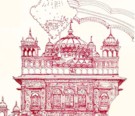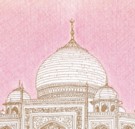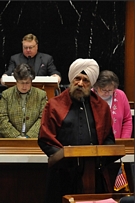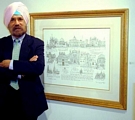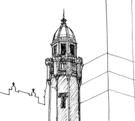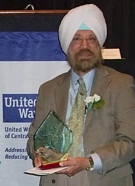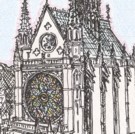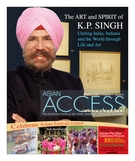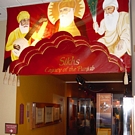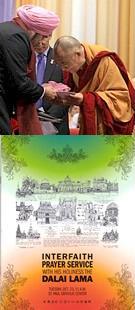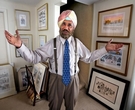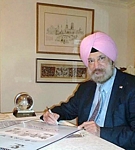Architect builds reputation on state’s historic structures
by James Glass
December 4, 2004
As part of the annual Spirit and Place Festival sponsored by the POLIS Center of IUPUI, a group of people recently gathered at North United Methodist Church to hear Indianapolis architect and artist K.P. Singh talk about his drawings of historic buildings and his philosophy of life.
Raised in India as a member of the Sikh religion, Singh studied architecture and city planning at the University of Michigan and came to Indianapolis in 1967 to work as a planner for the city’s Department of Metropolitan Development. He soon found himself in an odyssey discovering the historic architecture of his new home.
Singh also noticed that some of the key landmarks of the capital city were being demolished. When one of his favorites, Union Station, faced destruction, the young planner joined forces with fellow architect Don Perry; Robert Braun, then executive director of Historic Landmarks Foundation of Indiana; and others to form a committee to save the station.
They discussed ways to create public awareness of the threatened building. One idea was for Singh to create a line drawing of the structure that could be reproduced and distributed. The drawing’s popularity led Singh’s friends to suggest that he depict other Indianapolis landmarks to increase public appreciation for local heritage. New drawings of the Morris-Butler House at 12th and Park Avenue, the Indianapolis City Market, the Kemper House at 10th and Delaware and the Maennerchor Building at Illinois and Michigan soon found eager buyers.
In 1972, after a visit to India for reflection, Singh decided he could both make a contribution to his new home state and make a living by creating drawings of Hoosier architecture from the past 175 years. His goal was to build public acceptance of the idea that, like Europeans and Asians, Hoosiers have a heritage with meaning and value. Over the past 30 years, Singh has traveled throughout the state, the United States, the Western Hemisphere, Asia, the Middle East, Africa and Europe to seek out the defining landmarks of each locale. His primary audience has always been Indiana residents, and he has prepared drawings interpreting the architecture of many communities’ cultural and civic institutions.
One of Singh’s ways of interpretation has been to collect facades and details of notable buildings associated with a particular community or institution and arrange them in composite drawings. The lesson has been that — along with new skyscrapers, libraries, stadiums and city halls — the identity of each place lies in Romanesque-style courthouses, Italianate-style Main Street buildings, Renaissance-style cathedrals, Gothic college buildings, and turn-of-the-century fountains.
In 2003, he collected a selection of his drawings, accompanied by essays and poems on the universality of architecture and its capacity to enrich individual lives. One of his particular interests has been the architectural expressions of human spirituality throughout the world. His book, “The Art and Spirit of K.P. Singh,” contains several composite drawings in which the holy structures of many faiths.
In between are drawings of historic Indiana places of worship. The message is that the human quest for understanding the infinite and worshipping the Supreme Being takes many architectural forms, all equal in value and importance and all sharing certain attributes. For Hoosiers, Singh implies that the architectural expressions of our religious heritage have their own validity and essential role to play in our lives.
One of his beliefs is that buildings have souls. They contain something of the life force of those who designed them, built them, lived or worked in them, and visited them. Singh believes that when we encounter the landmarks of our past, we also encounter something of the people who have preceded us. One of the participants in the discussion session at the Spirit and Place event agreed that buildings have their own spirits, expressed in their art and architecture, and are even living beings. As such, she thought it unforgivable when soulful buildings are demolished.
Singh agreed, saying that architecture can indeed be something that pulsates with life.
Glass, of Indianapolis, is director of the graduate program in historic preservation and the Center for Historic Preservation in the College of Architecture and Planning at Ball State University. Contact him at jaglass@bsu.edu.
<
